Organisational Guidelines on Spreadsheet Design and Use
Although there are several spreadsheet-database software solutions that offer more than a traditional spreadsheet, such as Jotform Tables, spreadsheet software is still indispensable for many businesses.
From generating reports and creating a budget to becoming a glorified to-do list, spreadsheets have the flexibility to meet just about your every need.
The right spreadsheet software can not only help you sift through thousands of data sets but also keep you on track for setting and completing goals.
Whether you're on the hunt for a free tool to stay organized or are looking for the cream of the digital crop, we've compiled 12 of the best spreadsheet software options currently on the market.
Just so you know
When a spreadsheet isn't enough, use Jotform Tables to collect and manage information online.
Best spreadsheet software options
- Microsoft Excel
- Apple Numbers
- Google Sheets
- Quip
- EtherCalc
- Zoho Sheets
- LibreOffice
- Apache OpenOffice Calc
- Smartsheet
- Airtable
- Stackby
- SeaTable
1. Microsoft Excel
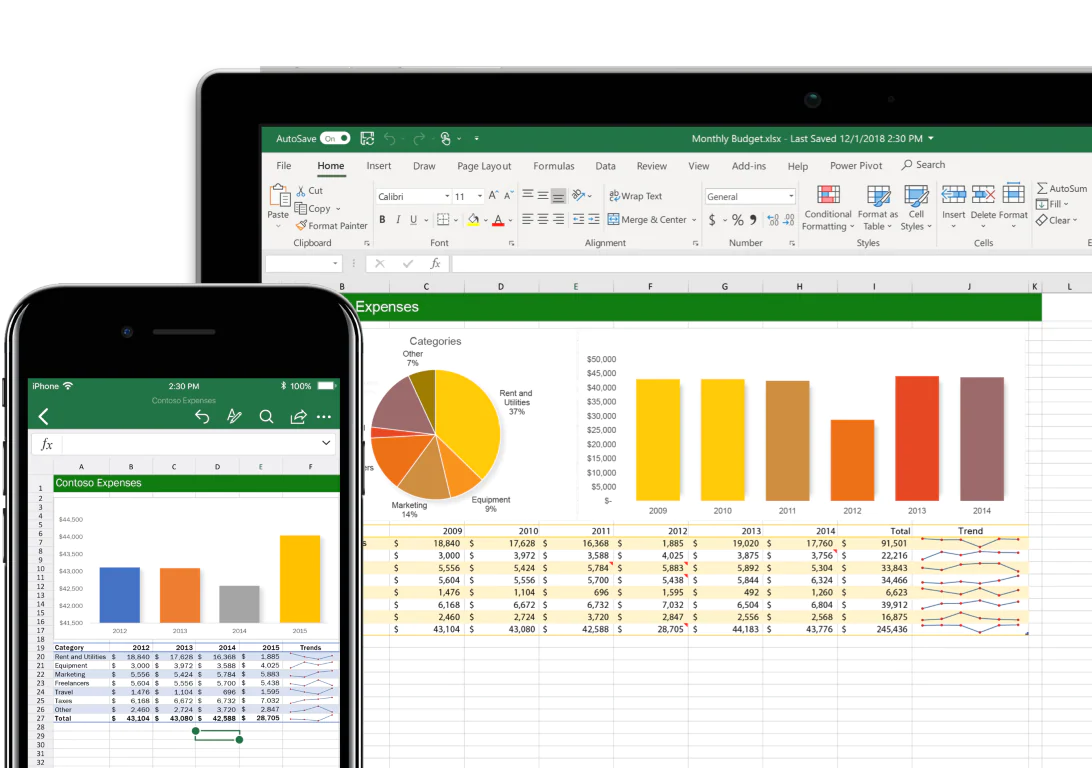
Introduced in 1987, Excel has become the default spreadsheet software option. After becoming a key component of the Microsoft Office suite in 1995, Excel has continuously pushed the boundaries of what the best spreadsheet software can do.
To date, Excel boasts a maximum cell count of a whopping 17,179,869,184 and offers more functions and features than any other spreadsheet software available on the market.
While the Excel interface is simple enough for even elementary school students to use, the program has also pioneered cutting-edge filters to sift through massive data sets. Add in the customizability of a Quick Access toolbar to pin your most-used functions and the availability to collaborate with other users seamlessly, and you can see why Excel is still so popular.
You can purchase Excel as part of an Office365 subscription starting at $69.99 per year or individually as a single license for $149.99. However, if you want to collaborate with others in Excel, you'll need an Office365 subscription.
2. Apple Numbers
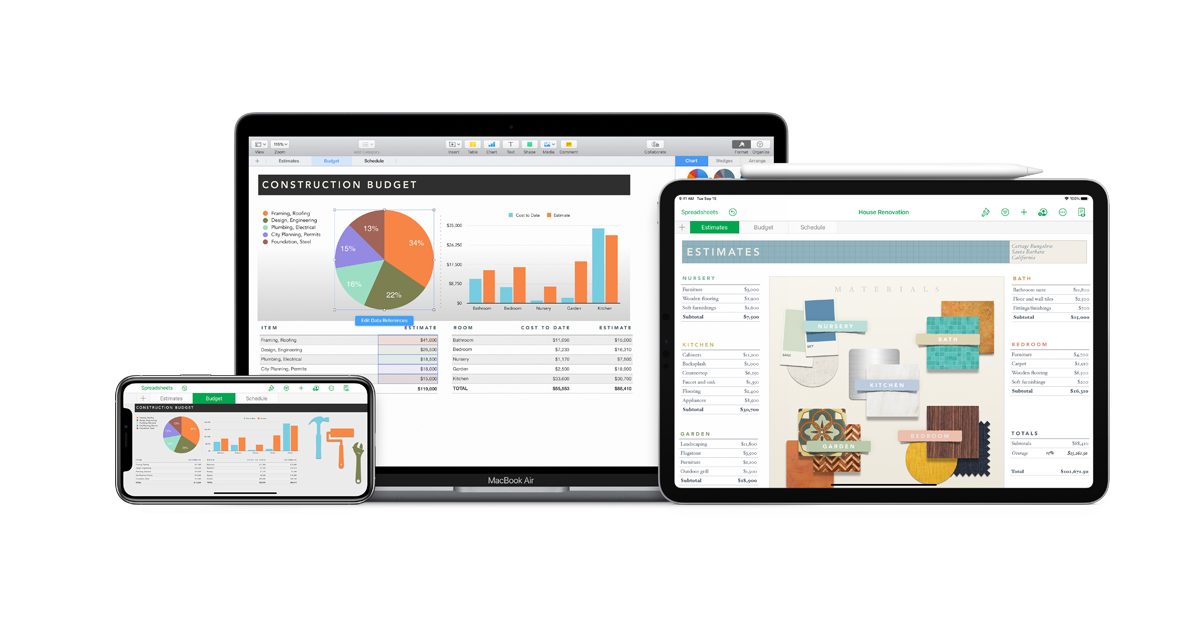
If you're an Apple customer, chances are you're familiar with Numbers, mainly because it comes preinstalled for free on your Mac. A key factor that makes Numbers one of the best spreadsheet software options is its clean, modern interface. Unlike Excel, Numbers loads as an infinite blank canvas that allows you to place tables wherever you want, including side by side.
Numbers comes equipped with templates to help you quickly execute common tasks. What it lacks in features, such as data analysis and the ability to manage large data sets, it makes up in ease of use and how it syncs across devices.
Plus, Numbers is free for anyone with a Mac.
3. Google Sheets

Google Sheets is a free alternative to both Excel and Numbers. Sheets requires only a Google account to begin work (which you already have if you use Gmail). Sheets offers real-time collaboration, commenting, and version history to accurately track all progress between contributors.
Google Sheets can immediately sync with G Suite apps like Google Analytics and Google Data Studio. It can also populate a spreadsheet with data pulled from Google Forms. If you use Jotform, you can use the Google Sheets integration for the same functionality.
In addition to its collaborative features, Google Sheets also comes equipped with a slew of traditional mathematical and logical functions. Even better, it's available on the web, Android, and iOS systems, making it one of the most easily accessible software options.
Google Sheets and all of its features are free for up to 15 GB of storage.
4. Quip
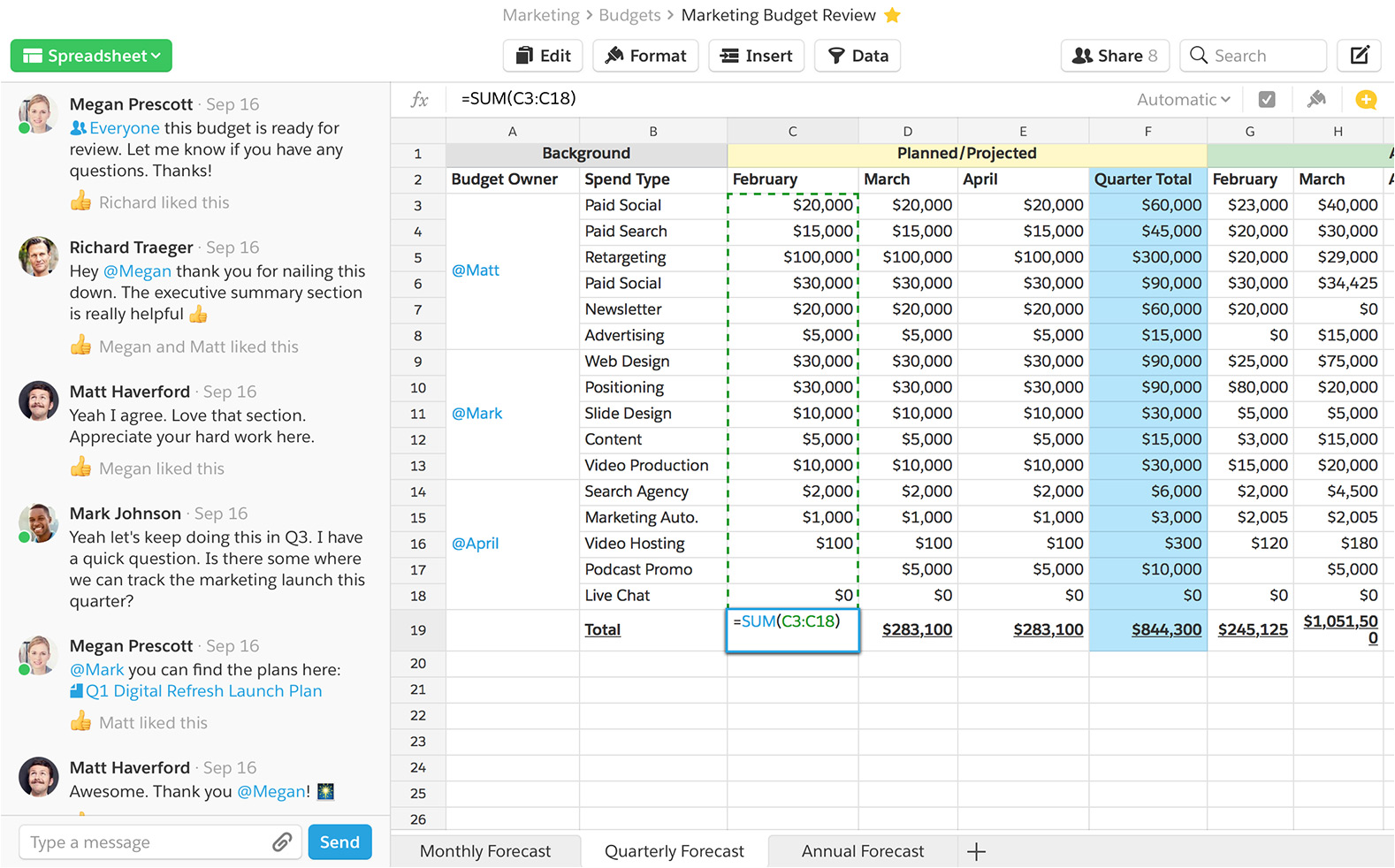
Quip is a unique productivity tool that combines spreadsheets, documents, and team chat all into one app. Founded in 2012 and later acquired by Salesforce in 2016, the tool features the flexibility and customization most have come to love from Salesforce. For instance, you can toggle between document and spreadsheet layout as you work.
Quip also boasts more than 400 built-in functions and offers keyboard shortcuts for most menu items, such as Shift-Space to select a row and Ctrl-Space to select a column. Plus, just like Excel, creating a graph or chart is as easy as selecting a data range and clicking a button (in this case, Insert and Chart).
Pricing starts at $10 per user per month for features including unlimited documents, spreadsheets, and slides as well as the ability to collaborate with built-in chat.
5. EtherCalc
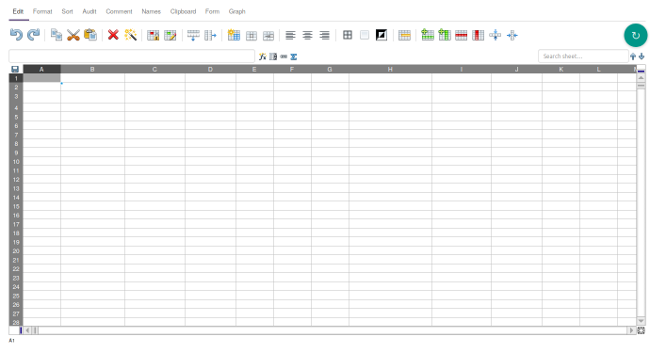
If you're on the hunt for something slightly less cumbersome than traditional spreadsheet software, EtherCalc might work for you.
Similar to Google Sheets, EtherCalc is free, web-based software. However, it doesn't even require an account to use. Simply visit the EtherCalc website and click Create Spreadsheet in the top left corner. The site creates a new, unique URL for each sheet, which you can then copy, paste, and share.
The one downside with this software is that it was created in 2006. The UI is a bit dated and lacks some features. Still, EtherCalc's easy access and quick sharing abilities make it one of the best free spreadsheet software options.
6. Zoho Sheets
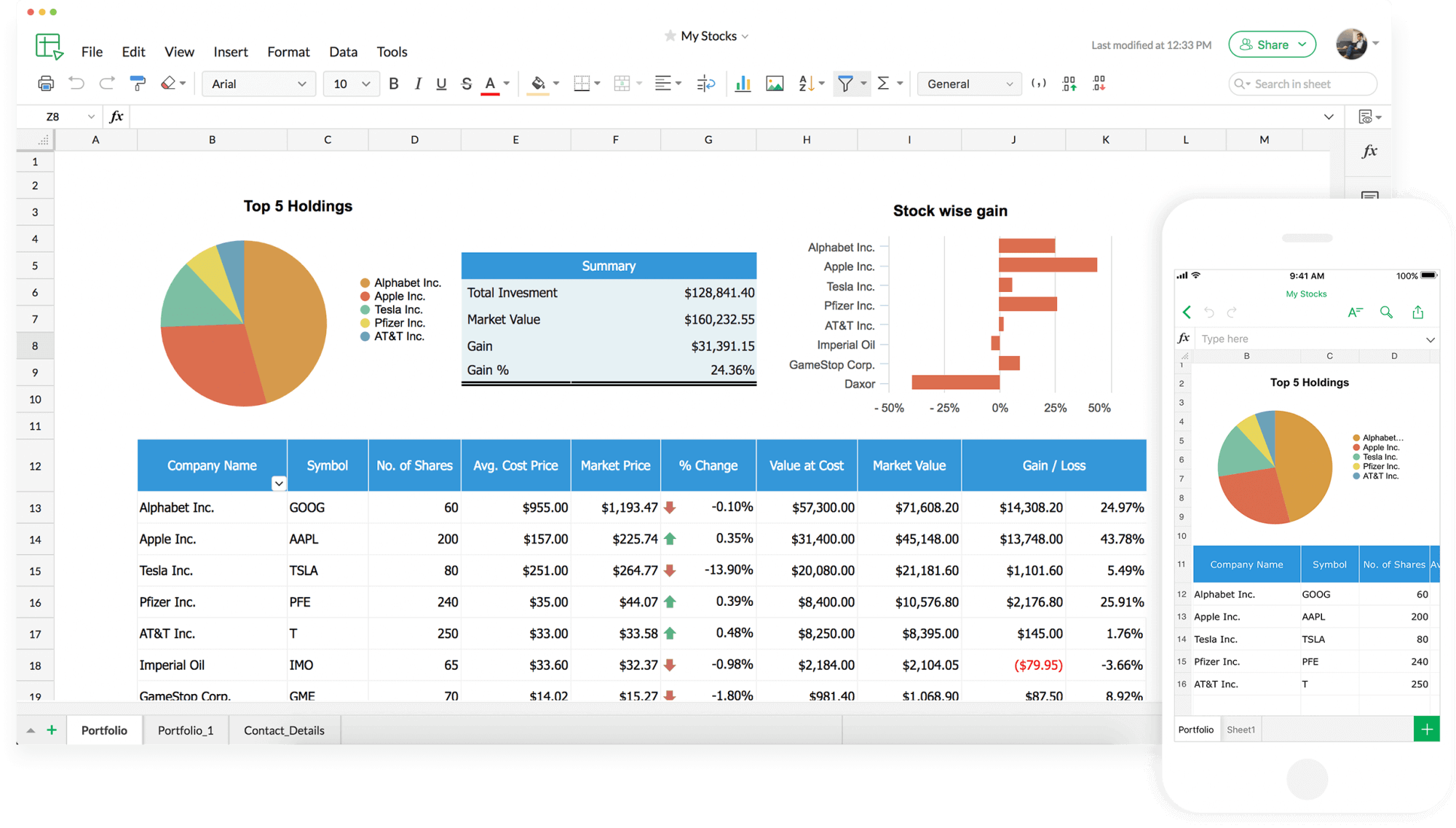
Similar to Google Sheets, Zoho Sheets is another cloud-based spreadsheet software program.
But Zoho far surpasses Google Sheets in terms of features, packing in over 350 available functions to date. Some additional features include pivot tables, conditional formatting, and data validation. You can even incorporate data from external sources with a click of a button. Zoho Sheets also supports 23 different languages.
Zoho offers a limited free plan for teams of up to 25 users with 5 GB of storage per user. Paid plans start at $4 per user per month, with 100 GB of storage per user.
7. LibreOffice
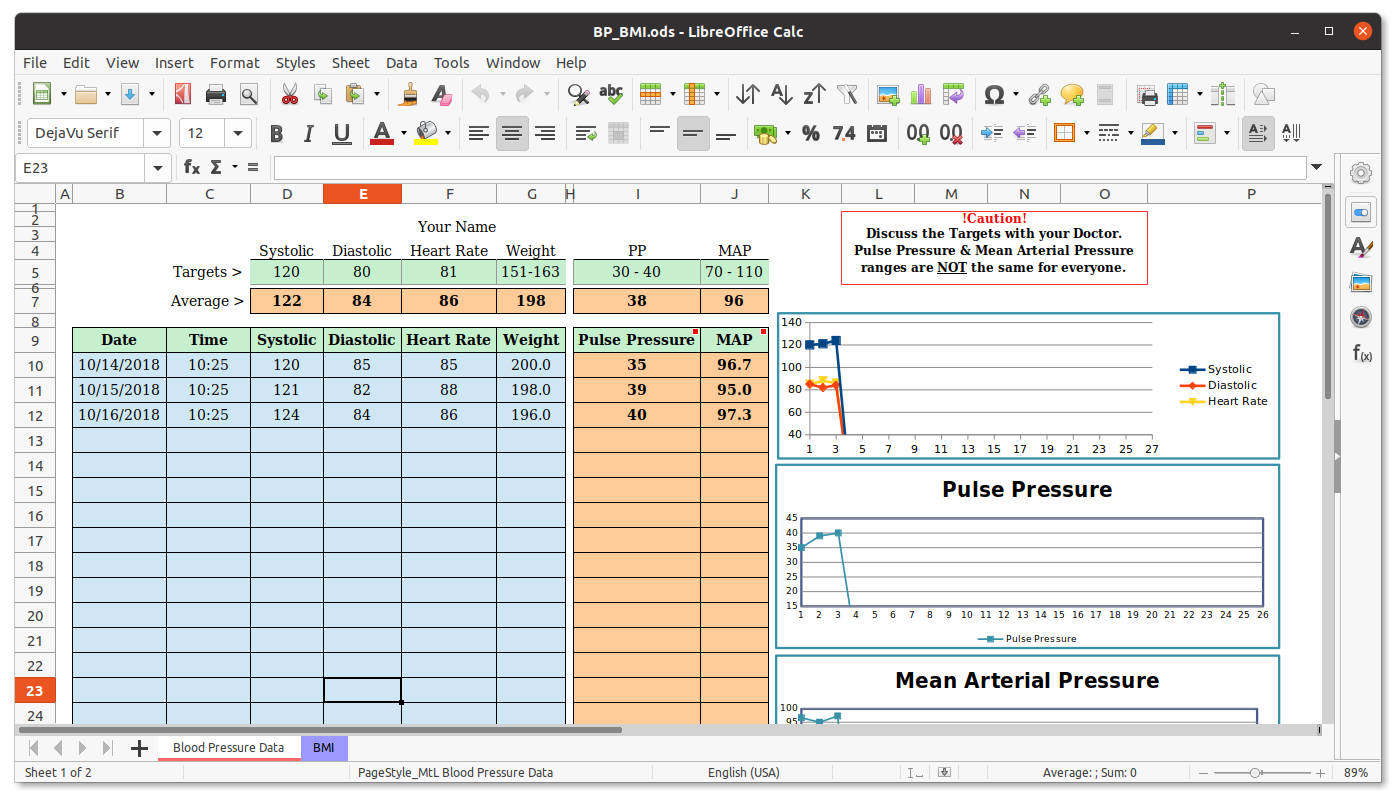
If you're looking for a free alternative to Excel that runs on your computer as opposed to through the web, LibreOffice is a solid option. While it lacks collaborative abilities, LibreOffice's management of large data sets makes it an ideal choice for someone handling massive amounts of information on a budget.
The UI is dated and cumbersome in places, but LibreOffice has about 300 features, including the DataPilot tool, which allows you to aggregate raw data and repurpose it in your spreadsheets.
Plus, it's free.
8. Apache OpenOffice Calc
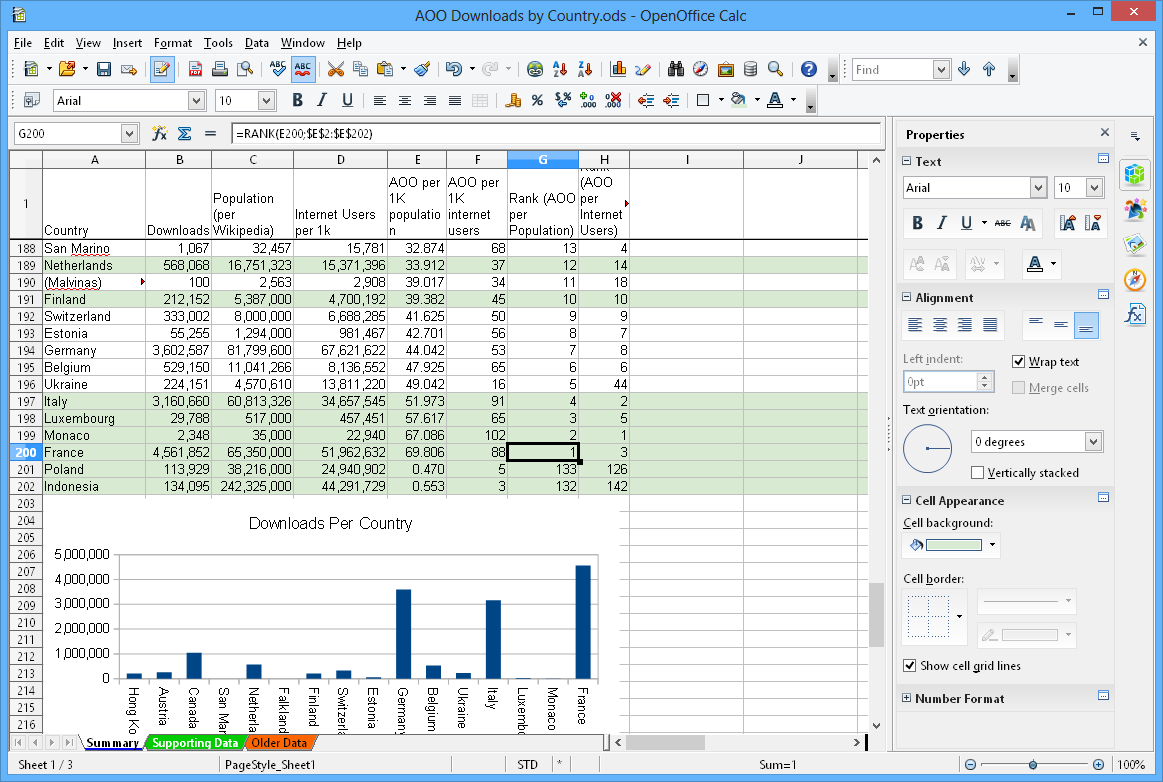
Initially released in 2001, OpenOffice Calc was designed to become an open-source alternative to Microsoft Excel. It was donated to Apache in 2011, and the company has recently made an effort to modernize their software.
Some key features include the Scenario Manager and natural language formulas. This free software is compatible with Windows, Mac, and Linux platforms.
Pro-Tip
Sign up for a free Jotform account to create powerful online forms in minutes — with no coding required.
9. Smartsheet
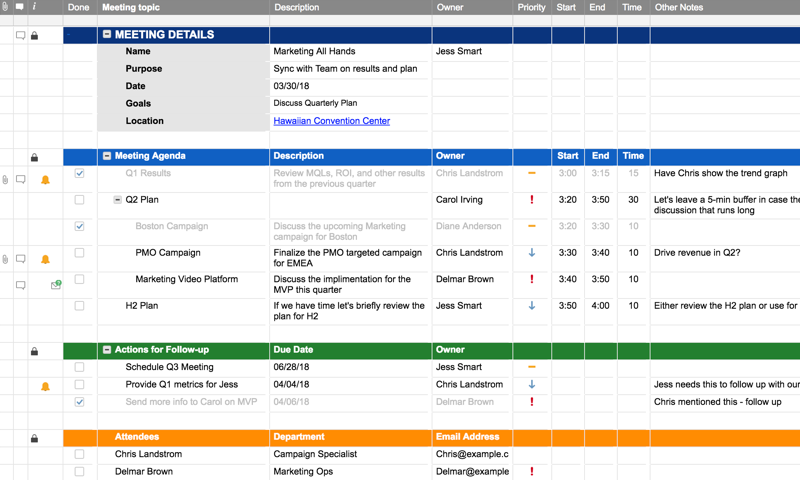
If project management and team collaboration are two of your goals, you can't go wrong with Smartsheet.
Using one tool, you can customize an existing project management template to create time lines and Gantt Charts. You can also monitor the status of specific tasks with a Kanban view, as well as use the Alerts & Actions tools to nudge a team member to approve or edit a piece.
Boasting seamless integration with other productivity-boosting apps like Google Suite, Dropbox, Slack, and OneDrive, as well as collaboration with external users like clients or investors, Smartsheet is a solid spreadsheet alternative.
Pricing starts at $14 per month for individual use and is $25 per user per month for business use.
10. Airtable
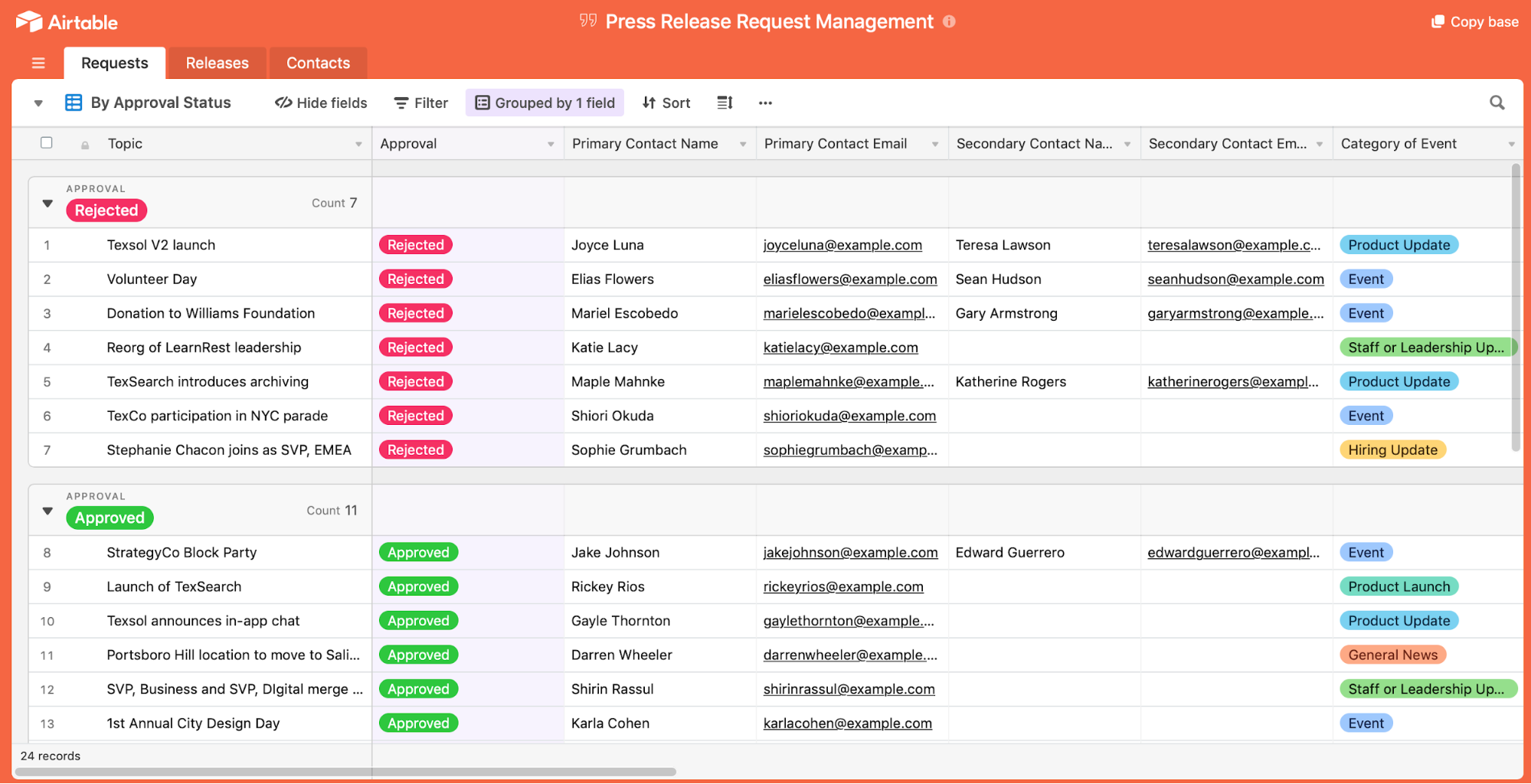
Complete with templates and tutorials, Airtable is like Google Sheets on steroids. This modern, well-designed platform is geared to improve productivity, offering features and templates that include a project tracker, a content calendar, product planning, and a sales CRM.
Airtable has all of the features you've come to expect from a spreadsheet solution, like the ability to create pivot tables and graphs, use formulas, and summarize values, along with plenty of project management and collaboration features.
While a free plan is available, pricing for business packages begins at $10 per user per month.
Whether you're looking for a free option or modern spreadsheet software with advanced collaboration features, these tools can help you work smarter and improve your productivity.
11. Stackby

Stackby is a collaborative spreadsheet-database tool that enables you to create workflows for specific needs. It combines the practicality of a spreadsheet interface with the comprehensiveness of a database in a customizable platform.
You don't need to know how to code to use Stackby. It automates workflows via third-party services like YouTube, Google, Mailchimp, and Facebook. Stackby is as easy to use as a spreadsheet but does more than a spreadsheet.
Spreadsheets are sometimes dull, but with Stackby you can visualize and organize your data your data in a beautiful dashboard.
Thanks to its functionality and a lot of API integrations, Stackby saves users time. More than 2,000 teams worldwide manage their data using Stackby. It's best for one to 500 users.
12. SeaTable

SeaTable is an online database with an enhanced spreadsheet interface. Unlike Excel, you don't have to use just one type of data. In addition to standard data types like text, numbers, and dates, SeaTable allows you to upload images and files.
Though SeaTable looks like a spreadsheet, it provides a flexible solution that brings all of your information into a single database. By applying various filtering and sorting features, you can create multiple views for different grouping needs.
SeaTable is a real-time collaboration tool that enables different teams to work on the same spreadsheet. With SeaTable, every team can access precisely the data they need.
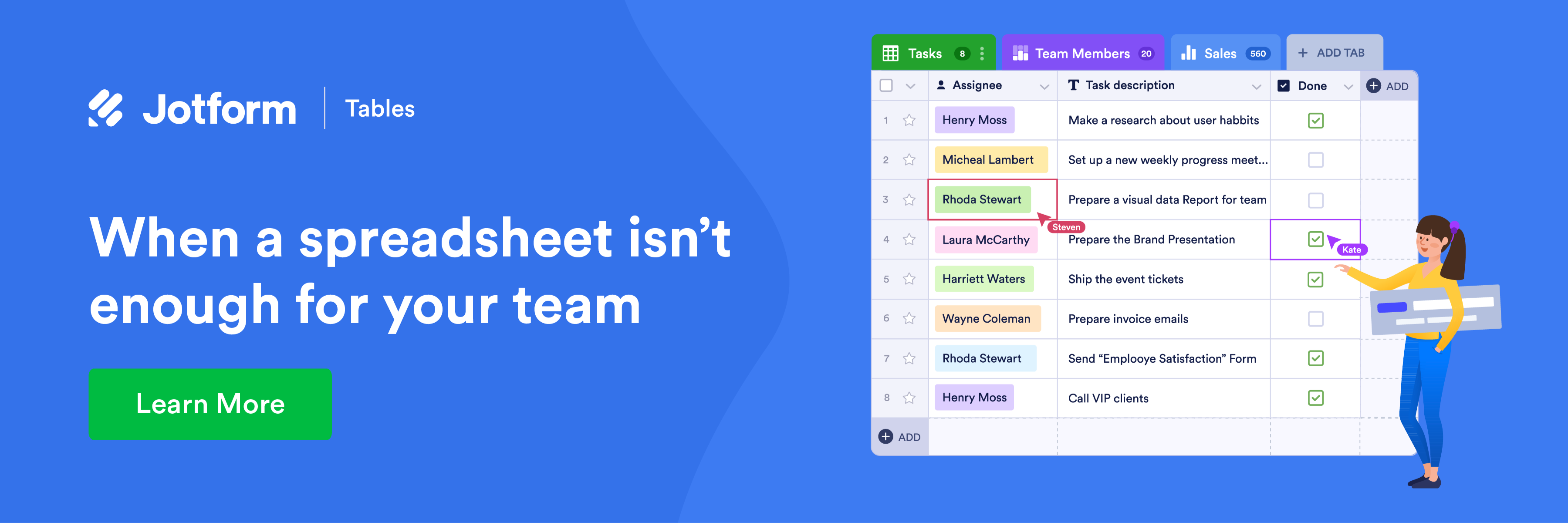
This article is originally published on Jan 16, 2020, and updated on Dec 08, 2021.
Organisational Guidelines on Spreadsheet Design and Use
Source: https://www.jotform.com/blog/best-spreadsheet-software/
0 Response to "Organisational Guidelines on Spreadsheet Design and Use"
Post a Comment